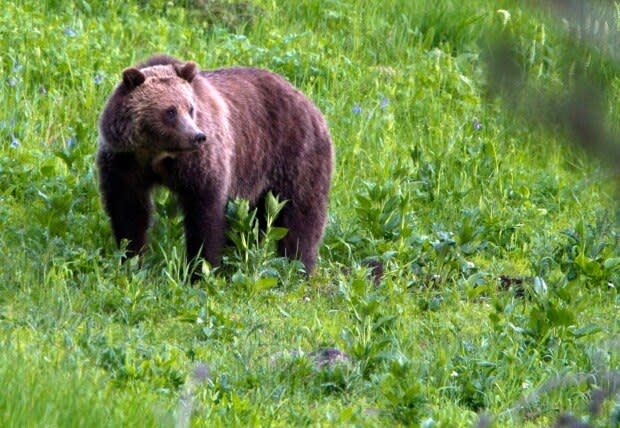33 bear deaths in 2019 marks 'average' human-bear conflict season in Yukon
Far less bears were killed this year as a result of conflict with humans than in the previous two seasons, say Yukon conservation officers — and it's likely due to weather.
"While these numbers are down from previous years ... this year's kind of an average year," said David Bakica, a conservation officer.
Yukon Conservation Officer Services delivered its annual bear report in Whitehorse on Thursday.
Thirty-three bears were killed this year: 22 by conservation officers and 11 by the public, in what are called "defence of life or property" kills.
This year marks a sharp decrease in bear deaths from last year, when 65 bears were killed, and 2017, with 54. The number of total bear incidents conservation officers responded to was also down: 163 compared to 267 in 2018 and 206 in 2017.
Management of the attractions is the most important thing that Yukoners can do to keep bears alive. - David Bakica, conservation officer
But before Yukoners pat themselves on the back for successfully keeping their properties safe from bears, Bakica said the decrease in human-bear conflicts was likely due to the weather. Last spring and summer's warm temperatures created favourable conditions for bears.
"There were good berry crops, good natural forage for the bears."
Bakica said it's also normal to see a drop in bear conflicts after a couple of particularly bad seasons with lots of bear fatalities because there are simply less bears around to get into trouble.
Protect livestock with electric fencing: officers
Yukon conservation officers say when bears are out, Yukoners need to manage anything that can attract a bear into areas humans occupy, such as dog food, barbecues and berry bushes.
Chicken coops, Bakica noted, were a particular issue this season. He said one grizzly got into seven chicken coops.

Bakica said installing an electric fence is the best known way to keep bears and other wildlife away from coops. He said conservation officers set up an electric fence this summer at a coop that a bear had already broken into three times. Bakica said when the bear returned several times, it was successfully deflected by the fence each time.
"That's a prime example of how these electric fences work," he said.
Bakica said electric fences should be used around other livestock as well, including pigs and turkeys.
Heavy-handed approach needed?
Bakica said conservation officers may start to issue more dangerous wildlife protection orders, which give people directions to manage or remove their attractant.
People who don't do so within a specific time could be charged under the Wildlife Protection Act — although Bakica said they didn't charge anyone this year.
The process is complaint-driven, meaning conservation officers aren't on the prowl looking for attractants, but rather respond to problems after they are reported.
"Management of the attractions is the most important thing that Yukoners can do to keep bears alive," said Bakica.

